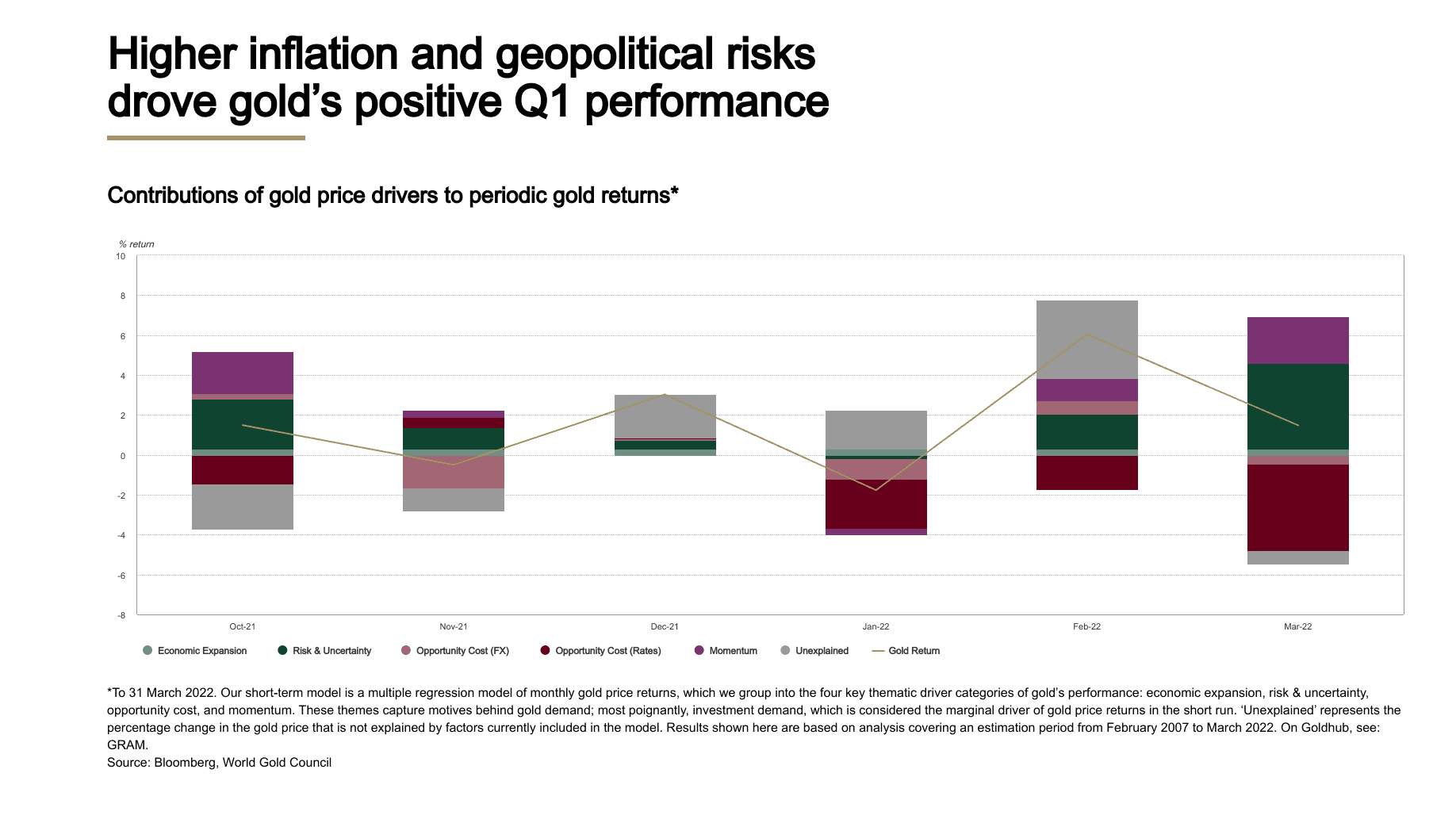Why should gold be included in a portfolio?
Global financial markets were impacted in the first quarter by geopolitical uncertainty, inflationary concerns, and rising interest rates in key markets, and the near future may bring additional challenges for investors, such as increased equity market volatility and a rising bond-equity correlation.
There was no shortage of financial market volatility in the first quarter of 2022. Higher interest rate expectations, rising inflation, and the Russia-Ukraine war all weighed on global equity markets in January.Turbulence persisted through the quarter. Investor confidence was shaken by the war, which was compounded by the US Federal Reserve’s March rate hike, which kept global equity market volatility high.
Other markets were also volatile. In Q1, crude oil and natural gas both increased by 34% and 50%, respectively, alongside similar increases in commodities like wheat (+31%) and nickel (+55%). Meanwhile, bond market losses have been triggered by rising rates and inflationary pressures.
However, gold was fuelled by the turbulence in financial markets. Soaring inflationary pressure and geopolitical risk were the primary drivers of gold’s price increase in Q1. It’s also worth mentioning that gold’s volatility during the quarter was significantly lower than that of most major assets.

Since the start of the pandemic, the global money supply has increased at an unprecedented rate, fuelling higher inflationary pressure, and rising commodity prices have added oil on the flame. Just as most countries are emerging from the COVID-19 pandemic saga, high inflationary pressures persist. As we shift from a prolonged period of low rates and range-bound inflation, it appears that the next chapter has already begun.
Furthermore, rising inflationary pressures may not be short-lived. Commodity inventories, such as industrial metals and crude oil, are at multi-decade lows, and jammed ports and increasing freight costs are putting pressure on already-disrupted supply chains. The commodity market is anticipated to remain volatile and tight as a result of these factors. As COVID restrictions are gradually lifted, emerging demand may lead to higher-than-normal inflation lasting longer in some markets.
Gold as a risk diversifier and inflation hedge
Investors often rush to gold, a safe-haven asset, during times of crisis, because gold performs well during equity market pullbacks, as we saw with the Russia-Ukraine war. Gold has a proven record of being an effective tail risk hedge, according to historical statistics.
Gold can also help portfolios outrun inflation. Its effectiveness as an inflation hedge is partially underpinned by its stable and limited supply, as well as the fact that real interest rates (the opportunity cost of holding gold) are typically low when inflation is high.
In comparison to other key assets such as bonds and equities, gold’s performance in Q1 2022 has proven its effectiveness as a risk diversifier.
Recent geopolitical events and financial market volatility have made gold an attractive investment. In a world where there is no shortage of unpredictability, having gold in your portfolio could bring peace of mind.
